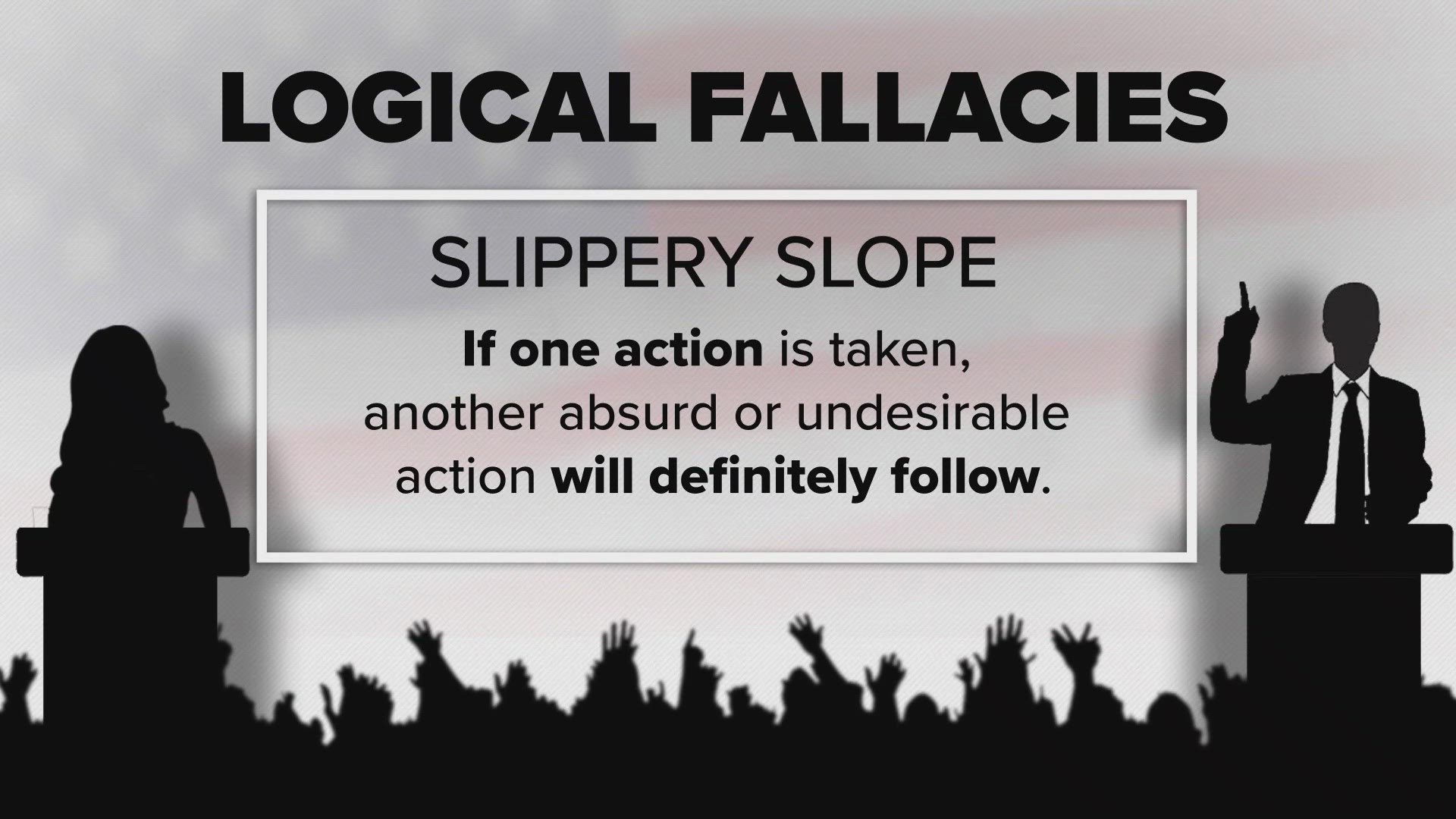PHOENIX — Detecting fact from fiction is not easy during elections. Candidates will often say anything to get votes.
ASU philosophy professor Bertha Manninen teaches students how to use an age-old strategy to ferret out bad arguments. The key is identifying logical fallacies.
Manninen bases her curriculum in the philosophy that it’s morally wrong to believe in something without having evidence to back it up.
“You have to be very, very careful because it’s easy for politicians to manipulate voters because they tell you what you want to hear,” Manninen said.
"Logical Fallacies" as a concept date back to Aristotle. They are manipulative rhetorical strategies used to make a point and leave everyone else worse off.
“A logical fallacy is an error in judgement,” Manninen said. “But they are so popular because they are so successful.”
Common Logical Fallacies
These are a few common logical fallacies Manninen discusses in her course.
Ad Hominem:
When the traits of the person are attacked rather than the merits of the argument they make.
“Instead of looking at the policies they insult the person,” Manninen said.
The Strawman:
When a position unrelated to the argument is attacked instead of the actual position.
“One example you hear a lot is people say ‘we need to ban assault rifles, address these mass shootings and the response is ‘oh you want to get rid of the 2nd Amendment? Get rid of all our guns? It’s attacking a different argument altogether,” she said.
Manninen said former President Obama and Democrats were guilty of this regarding the Affordable Care Act.
“Everybody’s like ‘well I don’t know why Republicans are so mad that people have health care!’ Republicans aren’t mad people have healthcare. They are concerned about process, how it’s paid for.”
Slippery Slope:
If one action is taken, another absurd or undesirable action will definitely follow.
Manninen says this can also fall under the category of the scare tactic.
One example she uses occurs in the immigration debate.
“Some will point to this undocumented immigrant who committed this horrendous crime. Therefore, all immigrants commit crimes and we need to be scared of them and so forth,” Manninen said. “In reality immigrants are less likely to commit crimes.”
Another scare tactic, says Manninen, was used when a Phoenix area school district tried to ban student teachers from their classrooms because those teachers came from a Christian university with LGBTQ beliefs viewed as intolerant.
“Washington School District had these students at their schools for a very long time. There had never been a complaint,” Manninen said. “So the scare tactic is ‘these students come from this organization with these stated beliefs therefore they will be intolerant towards kids and make them feel unsafe’.”
Ad populum:
Arguing that what is popular is always good.
“The idea is, if a lot of people believe it then there must be some kernel of truth to it,” Manninen said.
An example of this is the desegregation movement of the 1950’s. A large portion of southern voters wanted to continue racial segregation.
>> Download the 12News app for the latest local breaking news straight to your phone.
ARIZONA POLITICS
Get the latest Arizona political news on our 12News YouTube playlist here.

